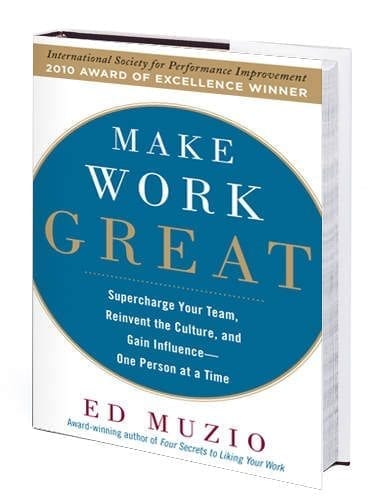Crafting a Positive Startup Culture
Startup work environments are always chaos, but they can still be great environments to work in, or they can be terrible. Whether yours is terrible or great, that same tone flows out to your customers and regulates your productivity inside. You as the founder are the starting point and definer, so you need to get it right.
What does it take to create a positive workplace culture? I did some research on this and compared it with my own experience. I’ve concluded and the experts agree that it’s all about understanding people, and overtly optimizing the factors that drive them at work.
Ed Muzio, in his recent book Make Work Great: Supercharge the Team, Reinvent the Culture, and Gain Influence One Person at a Time, summarized the key influencers as follows:
- We are driven by peers. According to many studies and observations, group pressure entices us to rethink our own opinions, and can even change our actual perceptions. That’s a good thing if your business peers are positive about what is happening, and it can cause a spiral into the ground if goals, priorities, and issues are not understood.
- We are driven by authority. Stanley Milgram, a famous researcher in the 1960s, concluded that “Ordinary people, simply doing their jobs, and without any particular hostility on their part, can become agents in a terrible destructive process.” It’s up to you, as the authority figure, to define the standards and communicate roles correctly.
- We are driven by expectations. Around most people at work is a core group of six to eight people (your “role set”) who send you expectations about what you should or should not be doing, along with implied rewards or punishments. Our satisfaction is strongly driven by this role set. Find compatible and complementary people for your role sets.
- We underestimate the impact of the situation. The pressure of a situation actually can override the prior three forces. Thus you always must be very sensitive to the context, since unfair blame based on situational factors will negate all your positive influences. Don’t make the mistake of assuming people act from personal choice alone.
You as an individual team member, and you as the authority figure must make a conscious choice to drive the culture around you, rather than be driven by it. Psychologists have noted that going passively along ‘on autopilot’ is often our worst enemy. It doesn’t get the job done, and it’s not even satisfying.
The most effective way for you to drive the culture is to understand yourself and to be explicit on the following items to your role set and others:
- Your personal goals and purpose
- Your intended impact (‘So what’)
- Your incentives and motivation
- Your progress as it happens
- The resources you need
- Your capability (share your knowledge)
By default, the at-work culture is just “how we do things around here,” based on problems faced “back then.” The problems you face today are different, and the solutions from back then were likely not the best. That means there is always a premium on culture teachers, compared to culture followers.
So don’t ask yourself how you can influence the culture, by rather how you already are influencing it. Are you a beneficiary of precedent or a slave to it? Choose to choose to make your work environment great.

